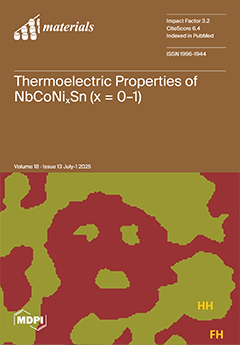Negative Poisson’s ratio (NPR) reinforcement offers a novel solution to the usual trade-off between strength gains and ductility loss. Incorporating NPR into ultra-high-performance concrete (UHPC) effectively overcomes the ductility limitations of structural elements. However, the interfacial bonding between NPR reinforcement and UHPC is not sufficiently studied, especially its patterns and mechanisms, impeding the application of the materials. In this paper, the effects of nine design parameters (rebar type, prestrain, etc.) on the bond performance of NPR-UHPC through eccentric pull-out tests are investigated, and a quantitative discriminative indicator
Kc for NPR-UHPC bond failure modes is established. The results showed that when
Kc ≤ 4.3, 4.3 <
Kc ≤ 5.64, and
Kc ≥ 5.6, the NPR-UHPC specimens undergo splitting failure, splitting–pull-out failure, and pull-out failure, respectively. In terms of bonding with UHPC, the NPR bars outperform the HRB400 bars, and the HRB400 bars outperform the helical grooved (HG) bars. For the NPR bars, prestrain levels of 5.5%, 9.5%, and 22.0% decrease
τu by 5.07%, 7.79%, and 17.01% and
su by 7.00%, 15.88%, and 30.54%, respectively. Bond performance deteriorated with increasing rib spacing and decreasing rib height. Based on the test results, an artificial neural network (ANN) model is developed to accurately predict the critical embedded length
lcd and ultimate embedded length
lud between NPR bars and UHPC. Moreover, the MAPE of the ANN model is only 53.9% of that of the regression model, while the RMSE is just 62.0%.
Full article






